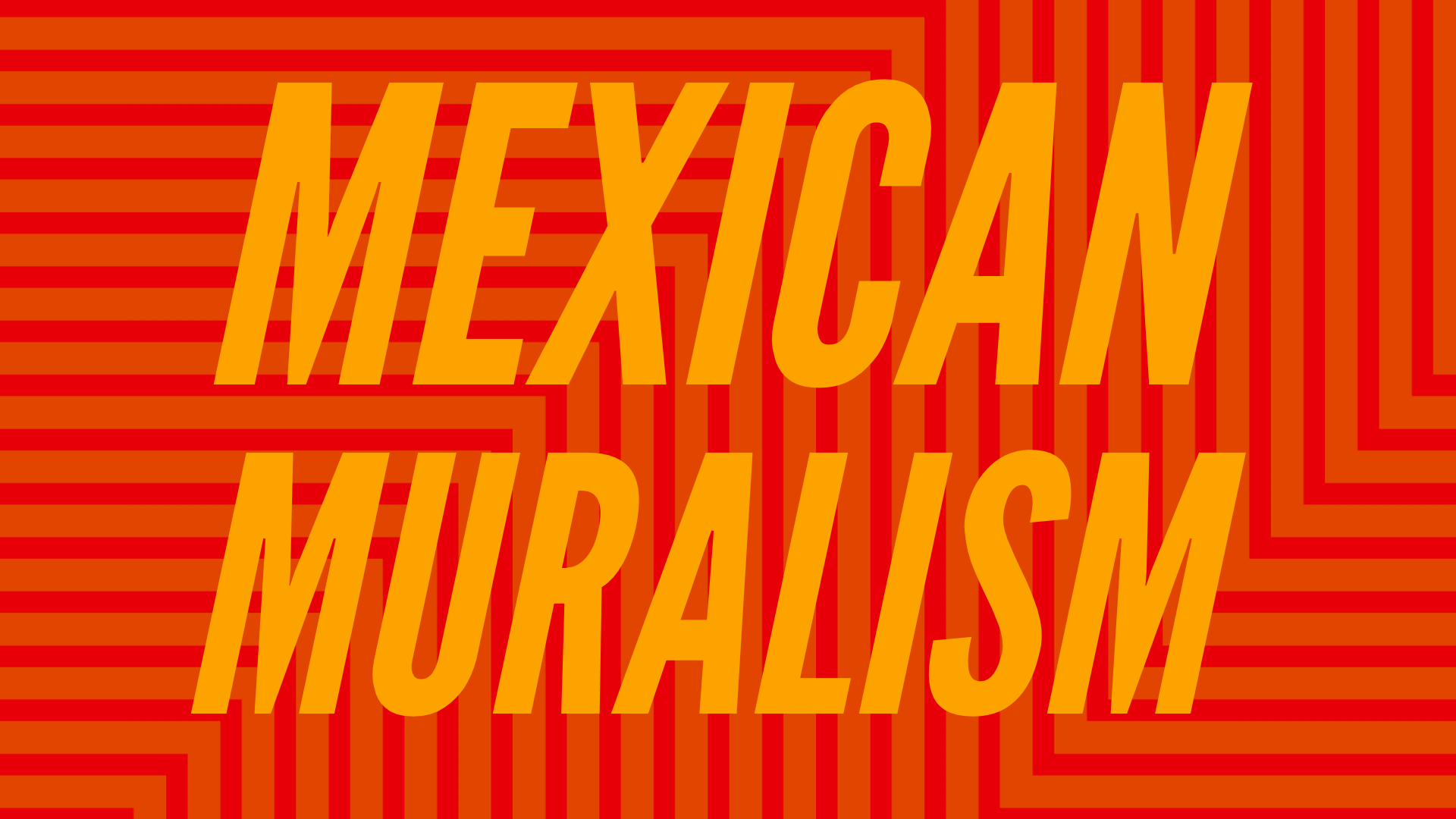“The Epic of American Civilization”, Detail by Orozco
Orozco’s mural, “The Epic of American Civilization,” shows a clear divide between North America and Mexico. While Anglo-America is structured and uniformed, Hispano-America exudes disorganization and greed. The left side featuring Anglo-America is grey and dull in color in addition to their similarly dull stances and clothes. In the cluster of North Americans, four distinct groups of people are easily identifiable. Forming a circle further into the left back of the mural there are women, men with hats, and other suited men. Closer to the front children robotically stand around their teacher who prominently stands in her contrasting blue dress. They all stand in a puppet like manner wearing the same clothes like a uniform. In the far circle, the blonde woman wear white dresses and the men wear hats and suits of different blue, black and grey shades. The school children also demonstrate uniformity through their white dresses and blonde hair. The children all stare forward in a daze, not observant or smiling like a child is normally known for. The cluster of adults in the back of the painting also stare blankly looking at the people across from them restrainedly. All of them stand tall and still similar to the school building in the background.
This mural’s Hispano-America side has a similar structure to Anglo-America with its cluster of people around one particular figure. Compared to the Anglo-America side where the teacher is the largest and most prominent figure, the Hispano-America side features a Mexican revolutionary man as the largest standing figure. Those two aspects are the only visual similarities though. Hispano-America demonstrates chaos compared to dullness starting with the people who desperately fling themselves onto the bags of money and the military general who prepares to stab the revolutionary man from behind. Another example of chaos in the mural is the falling building parallel to the strong standing school next to it on the Anglo-American side. Not only does the Hispano-American side represent disaster and chaos, but it also displays more vibrancy through its many colors.

